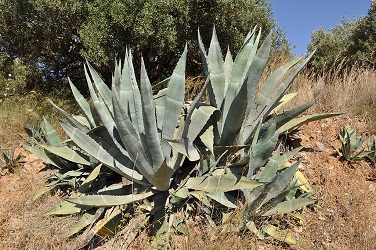
However, if you want to buy a bottle of agave nectar/syrup at the store, you’re going to get a much less healthy product than that from your hypothetical plant. Here’s a good summary:
The sweetener commonly sold as agave nectar would be more accurately labeled as agave syrup.
It has little in common with the traditional sweetener made historically by people in Mexico.
That said, the starting process is the same. The plant is first cut and pressed to extract the sugary sap.
While this sap is high in sugar, it also contains healthy fiber like fructans, which are linked to beneficial effects on metabolism and insulin.
However, when processed into a syrup, the fructans are extracted and broken down into fructose by exposing the sap to heat and/or enzymes
This process — which is similar to how other unhealthy sweeteners like high-fructose corn syrup are made — destroys all of the health-promoting properties of the agave plant. (from “Agave Nectar: A Sweetener Even Worse for You than Sugar?”)
If you think about it, high-fructose corn syrup is also made from, well, corn. It starts out with a natural source, a plant, too. And “blue” agave, sometimes touted as being the best grade and primarily grown for the tequila industry, produces the highest-fructose end product of all agave varieties. Because of the high fructose levels of every agave type, though, the syrup has a lower glycemic index than ordinary sugar, one of the big reasons why it’s been touted as being “diabetic friendly” or “blood sugar friendly.” I know I sound like a broken record here, but it bears repeating (and repeating, and repeating): while it may be better in the short term to consume a sweetener that doesn’t cause blood sugar spikes, you’re just sending the fructose to your liver and forcing that organ to do the work that would normally have been done by your pancreas.
So with this post I’m ending for now my rants and raves about various sweeteners other than regular old table sugar, which I also rant and rave about. There are other ones out there (Splenda, for example), pretty much all falling under the “artificial” category, and all pretty much horrible. They keep your sweetness cravings alive, may still cause insulin spikes (the jury seems to be out on that one at least for now) because your body is so exquisitely designed that it can react proactively even to a sweet taste, and possibly have a harmful effect on your gut flora.
Everything doesn’t have to be sweet!